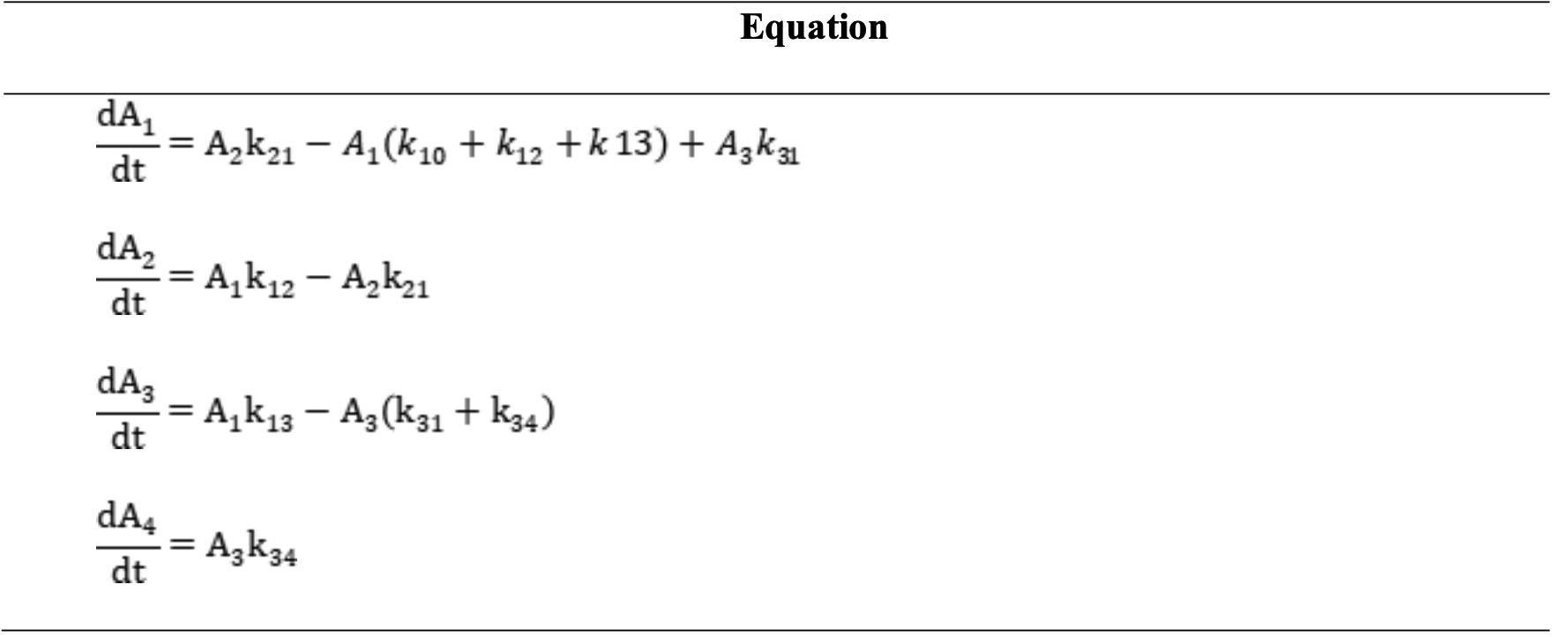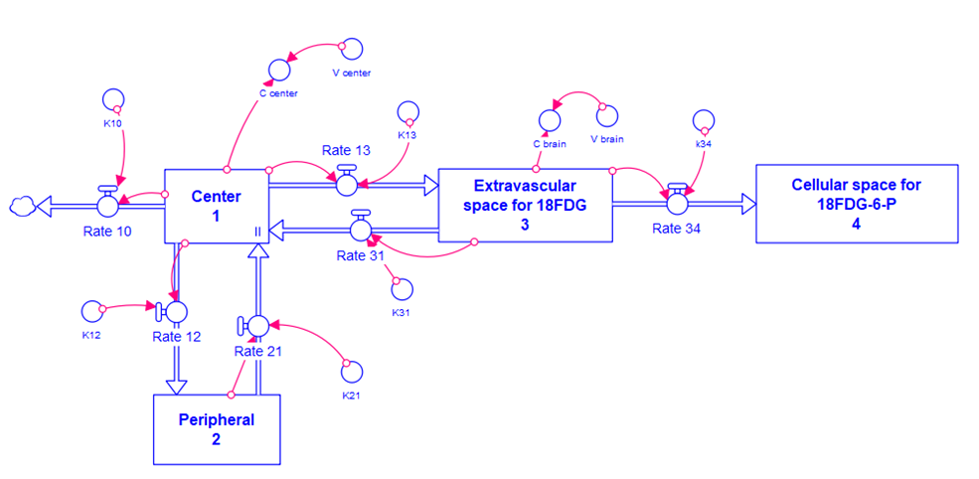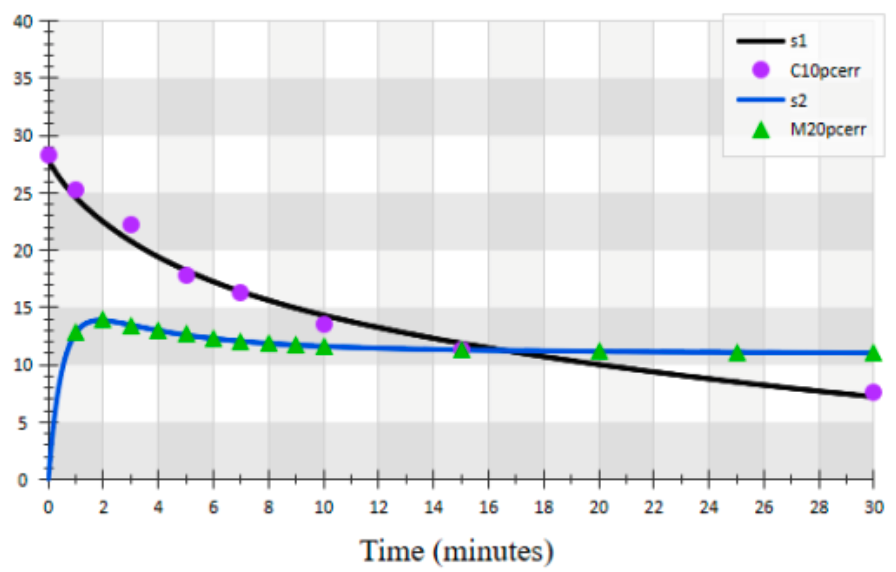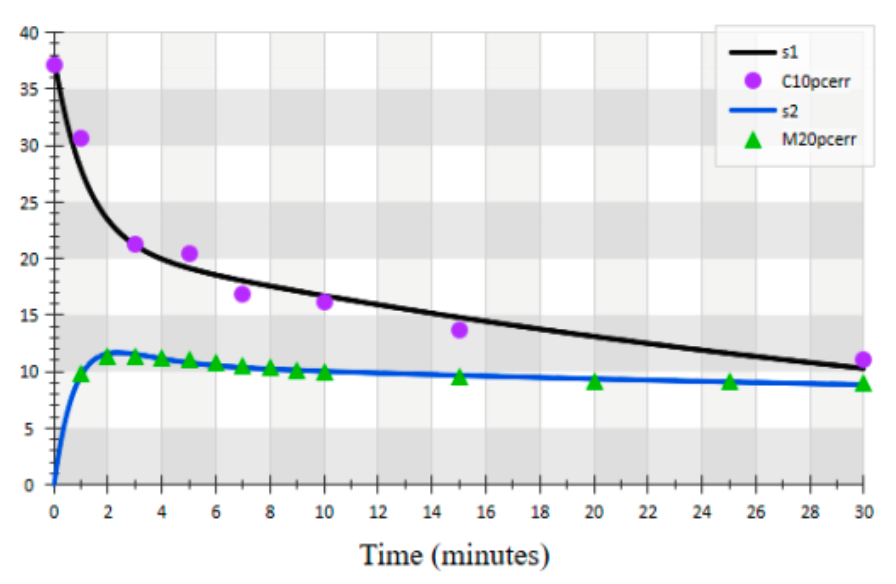Blood-Brain Glucose Transfer in Alzheimer's Disease - Effect of Aß40 Exposure
Description:
A four-compartment PK model was constructed to evaluate the transport and utilization kinetics of glucose following an IV bolus of 18 fluorodeoxyglucose (18F-FDG) administered to the central compartment. SAAMII program was used to estimate transport constants of the four-compartment model, and calculate the pharmacokinetic parameters of 18F-FDG in plasma. Stella program was used to simulate parameters, and get kinetic curve of 18F-FDG. To investigate the effect of Aß40 peptides exposure on glucose transport from blood to brain and its utilization within the brain cells, B6SJLF1 mice was pre-infused with or w/o Aß40 peptides via internal carotid artery following an IV bolus of 18F-FDG injected to the central compartment. An increase in AUC for the central compartment with a decrease in amount AUC for phosphorylated 18F-FDG in brain cellular space was observed for the Aß40 pre-infused mice compared to control model. The Aß40 pre-infused mice was also characterized by a decrease in efflux from brain extravascular space to the central compartment, along with a decrease in brain metabolic rate. Simulated output agreed with experimental and literature data. The presented model represents an initial framework to help guide the design and interpretation of future experiments, the results of which will enable continued refinement of the model structure and input parameters.
Assumptions:
- 18F-FDG can only be eliminated from central compartment via renal route.
- Amount of 18F-FDG injected was negligible compared to mice glucose level.
- 18F-FDG was homogenously distributed in the brain tissue.
- The transport was implemented through a single cell membrane (BBB).
- 18F-FDG is only phosphorylated by hexokinase and cannot be further metabolized.
Equations:

Model Structure:

Result

